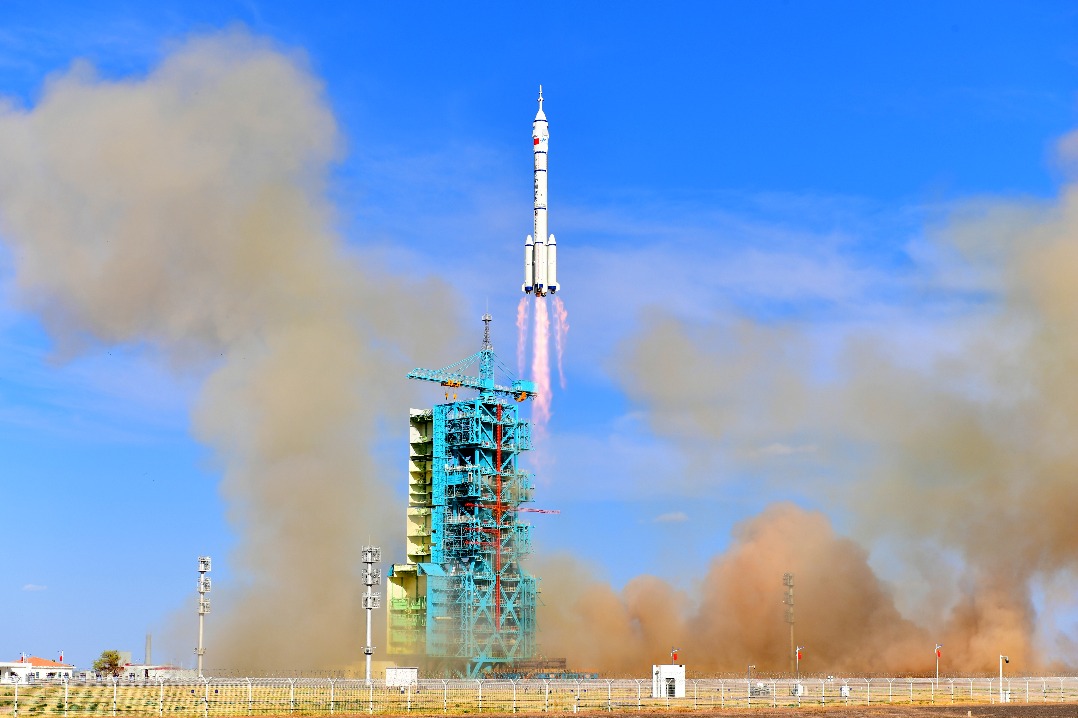Soaring beyond borders


Growing potential
The move is accompanied by fast-expanding charging infrastructure and a wide range of nonfinancial incentives to boost sales, such as exempting EVs from purchase taxes and setting a minimum share of EVs in vehicle procurement for certain public institutions. This led to a surge in electric car sales nationwide in 2015, with a remarkable 343-percent year-on-year sales increase. Riding on a low-carbon drive away from fossil fuel cars to cleaner alternatives, EV sales have emerged as the country's exports driver due to their competitive prices compared to those of Western manufacturers.
In the domestic market, the EV penetration rate topped 50 percent for the first time in July, according to the China Passenger Car Association. As a battery EV exports behemoth, China leveraged the EV surge last year to surpass Japan as the world's leading vehicle exporter. As per the American think tank Atlantic Council, China's total battery EV exports skyrocketed 70 percent to $34.1 billion last year, with the European Union being the primary destination and representing almost 40 percent of these exports.
"Policy-led industrial development is clearly characterized in China," says Hooi. "With clear signals from the top leadership, the low-altitude economy sector is showing vast potential to become another exports catalyst."
Global financial services leader Morgan Stanley forecasts the next-generation flight industry to be a trillion-dollar business by 2040. The market size of China's low-altitude economy sector alone is projected to climb from over 500 billion yuan ($70.27 billion) last year to 2 trillion yuan by 2030, according to the Civil Aviation Administration of China.

Cities in Guangdong province, including tech powerhouse Shenzhen, are at the forefront, with companies like drone makers DJI and Autel Robotics leading the pack, says Ryan Ip, vice-president and co-head of research at think tank, Our Hong Kong Foundation.
He notes that Shenzhen's drone business generated nearly 75 billion yuan in production output in 2022, accounting for 70 percent of the national total. Consumer drones accounted for 70 percent of the global market share. Provincial capital Guangzhou expects its low-altitude economy to hit 150 billion yuan by 2027. "This sector offers potential solutions for urban challenges in densely populated areas like Hong Kong, particularly in transportation and logistics," says Ip.

A tailwind is that technologies adopted in EVs are highly transferable to low-altitude economic applications, according to experts. Take electric vertical takeoff and landing (eVTOL) aircraft, also known as flying taxis, as an example. Burt Guo, CEO of Aerofugia Technology - a subsidiary of Chinese carmaker Geely - says he believes eVTOL aircraft could take an 80-percent share of the supply of EV materials and components.
Among the critical parts of the next generation of flights is the battery, which has been widely adopted in new energy cars, says Koh Weng Siang, co-founder and vice-president of Volar Air Mobility. "This gives China a clear edge to push forward the low-altitude economy agenda."
A case in point is China's Contemporary Amperex Technology - the world's largest EV battery producer. Commanding more than 37 percent of the global market last year, the company supplies batteries to both domestic brands and international carmakers like Tesla and BMW.























